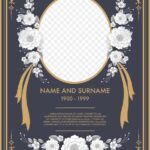I. Introduction to Fabric Upcycling: Why Transform Old Textiles?
II. Creative Techniques for Upcycling Fabrics
III. Sustainable Benefits of Fabric Upcycling: Environmental Impact and Beyond
Introduction to Fabric Upcycling: Why Transform Old Textiles?
Have you ever looked at a pile of old clothes or textiles and wondered what to do with them? Instead of tossing them into the trash, why not consider fabric upcycling? This creative process allows you to breathe new life into materials that might otherwise go to waste. But why should we care about transforming old textiles? Let’s dive into this exciting world of upcycling and explore its many benefits!
What is Fabric Upcycling?
Fabric upcycling is the art of taking discarded or unused textiles and giving them a new purpose. It ranges from simple projects like turning an old T-shirt into a tote bag to more complex endeavors like reworking multiple garments into a stylish quilt. The key is to think outside the box and tap into your creativity! Not only does this practice help reduce waste, but it also allows you to express your personal style.
The Need for Upcycling
So, why is upcycling such an important practice today? Here are a few compelling reasons:
- Environmental Concerns: The fashion industry is one of the leading contributors to environmental degradation. By upcycling, you can help reduce the amount of textile waste that ends up in landfills, where it can take years to decompose.
- Resource Conservation: Upcycling minimizes the need for new resources. Instead of buying new fabric, why not utilize what you already have? This not only saves money but also conserves water and energy that would be spent on manufacturing new textiles.
- Unique Creations: One of the most exciting aspects of upcycling is that you get to create something that is truly one-of-a-kind. Forget about mass-produced clothing; with upcycling, your creations will reflect your personality and creativity.
The Emotional Connection
Beyond the environmental and economic benefits, there’s an emotional aspect to upcycling that shouldn’t be overlooked. Many of us have old clothes that carry sentimental value—perhaps a favorite shirt from a concert or a dress worn on a special occasion. By transforming these pieces into something new, you can preserve those memories while also giving them a new lease on life.
Getting Started
If you’re ready to embark on your fabric upcycling journey, you don’t need to be a professional seamstress. Start small! Here are a few easy ideas to get your creative juices flowing:
- Turn old jeans into a stylish denim bag.
- Transform a worn-out sweater into cozy mittens or a scarf.
- Make fabric scraps into fun coasters or wall art.
Remember, the goal is to have fun and let your creativity shine! With a little imagination, you can turn what was once forgotten into something fabulous.
In conclusion, upcycling fabrics is more than just a trend; it’s a meaningful way to contribute to a sustainable future while expressing your unique style. So next time you’re about to toss that old shirt or pair of jeans, think again—there’s a world of possibilities waiting just for you!
Creative Techniques for Upcycling Fabrics
Hey there, fabric lovers! Have you ever looked at a pile of old clothes or leftover fabric scraps and thought, “What on earth can I do with that?” Well, let’s dive into the wonderful world of fabric upcycling! It’s not just about saving a few bucks; it’s also a fantastic way to express your creativity and give new life to materials that would otherwise end up in landfills.
1. Patchwork Magic
One of the most popular techniques for upcycling fabrics is patchwork. This method is perfect for using up small pieces of fabric that you just can’t bear to throw away. Here’s how to get started:
- Choose Your Fabrics: Gather a mix of old clothes, fabric scraps, or even thrift store finds.
- Cut and Arrange: Cut them into squares or rectangles and lay them out in a pattern that makes your heart sing!
- Sew It Up: Once you’re happy with the arrangement, sew those pieces together to create a beautiful quilt, tote bag, or even a funky jacket!
Patchwork can be as simple or complex as you want. Plus, you’ll have a one-of-a-kind item that reflects your unique style.
2. Fabric Paint and Stencils
If you’re feeling a little artsy, fabric paint and stencils are your best friends! This technique is fantastic for revamping plain old fabric items. Here’s how you can get started:
- Pick Your Canvas: Choose an item you want to upcycle, like a plain t-shirt, tote bag, or pillowcase.
- Get Creative: Use stencils to create fun designs or freehand your masterpiece!
- Set It: Don’t forget to follow the paint instructions to set the design so it lasts through washes.
This method allows you to personalize your textiles and unleash your inner artist.
3. Transforming with Dye
If you’re looking to change the color or give a faded item new life, dyeing is an exciting technique! You’d be surprised at what a splash of color can do. Here’s a simple guide:
- Select Natural or Synthetic Dyes: Depending on your fabric type, choose a dye that suits it best.
- Prepare Your Fabric: Make sure your fabric is clean and damp; this helps the dye absorb better.
- Dye Away: Follow the dye instructions for soaking time and method – whether it’s tie-dye, dip-dye, or ombre!
Don’t be afraid to experiment! Mixing colors can lead to stunning new shades and patterns.
4. Refashioning Clothes
Lastly, don’t forget about the power of refashioning! This technique allows you to take existing garments and turn them into something completely new:
- Cut and Sew: Transform an oversized shirt into a fitted dress or a pair of pants into a stylish skirt.
- Add Embellishments: Use lace, buttons, or fabric scraps to create unique designs and details.
- Mix and Match: Combine different pieces to create a fresh look. Think of it as fashion alchemy!
The possibilities are endless, and the best part is, you get to wear your creativity!
So, whether you’re a sewing pro or just a beginner, these upcycling techniques can turn your old fabrics into fabulous new creations. Happy upcycling!
Sustainable Benefits of Fabric Upcycling: Environmental Impact and Beyond
When we think about fabric upcycling, the creative visions of transforming old clothes into something fabulous often dance in our minds. But let’s take a moment to dig deeper into the sustainable benefits of this practice. Upcycling isn’t just about aesthetics; it’s a powerful way to make a positive impact on our environment and our communities. Let’s explore how upcycling old textiles can contribute to a more sustainable world!
1. Reducing Textile Waste
Did you know that millions of tons of textiles end up in landfills every year? The Environmental Protection Agency (EPA) reports that around 17 million tons of textile waste is generated annually in the United States alone! By choosing to upcycle fabrics, you’re actively helping to divert this waste from landfills. Instead of tossing that old shirt or pair of jeans, you can breathe new life into them, thereby reducing the volume of waste we contribute to our planet.
2. Conserving Resources
Creating new textiles involves a significant amount of resources, from water and energy to raw materials. Upcycling helps to conserve these resources by:
- Minimizing Water Use: The textile industry is notorious for its water consumption. By upcycling, we use existing materials instead of producing new ones, which conserves water.
- Reducing Energy Consumption: Manufacturing new textiles requires energy-intensive processes. Upcycling reduces reliance on energy-intensive manufacturing.
- Less Chemical Pollution: Many textiles are treated with harmful chemicals. Upcycling means fewer chemicals are released into the environment.
3. Supporting Local Economies
When you upcycle fabrics, especially if you purchase them from thrift stores or local artisans, you’re supporting local economies. This practice encourages small businesses and local charities, as people donate their old clothes instead of discarding them. As a bonus, this helps create a sense of community and promotes a culture of sustainability.
4. Fostering Creativity and Mindfulness
Upcycling isn’t just good for the planet; it’s good for the soul! Engaging in creative projects can be therapeutic and helps foster mindfulness. Taking the time to design and create something new from old materials allows you to connect with your pieces on a deeper level. It’s a way to express your individuality while being thoughtful about consumption.
5. Spreading Awareness
Every time you share your upcycled creations on social media or showcase them in your community, you’re raising awareness about the importance of sustainable practices. By inspiring others to consider upcycling, you can spark a movement that encourages more people to think twice before throwing away their old textiles.
In conclusion, fabric upcycling is a win-win for all! It reduces waste, conserves precious resources, supports local economies, nurtures creativity, and spreads awareness about sustainability. So next time you’re tempted to throw out that old fabric, think about the incredible potential it holds. Transforming the way we view and handle textiles can lead to a healthier planet and a more vibrant, sustainable future. Let’s embrace the art of upcycling together!










Comments